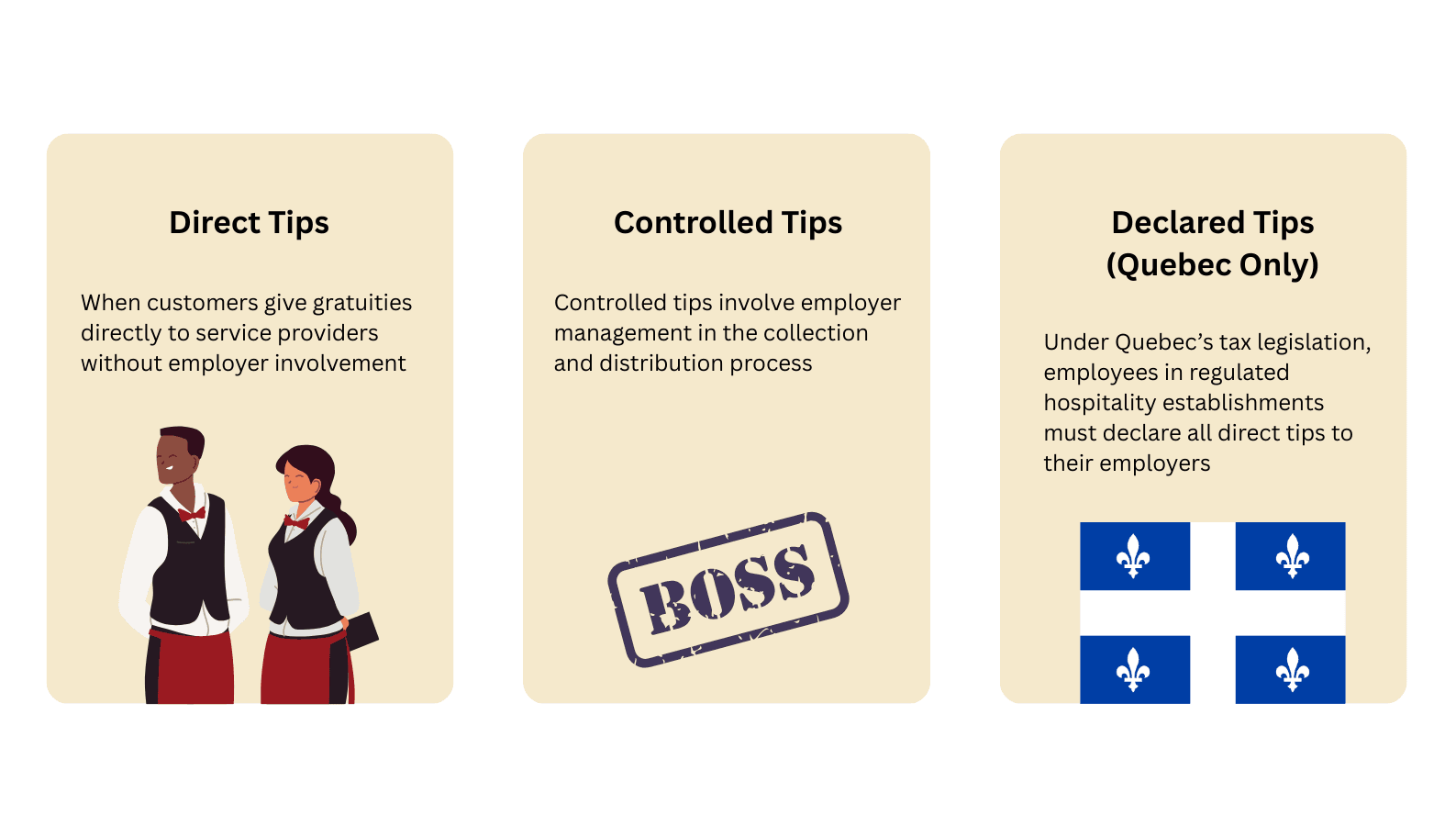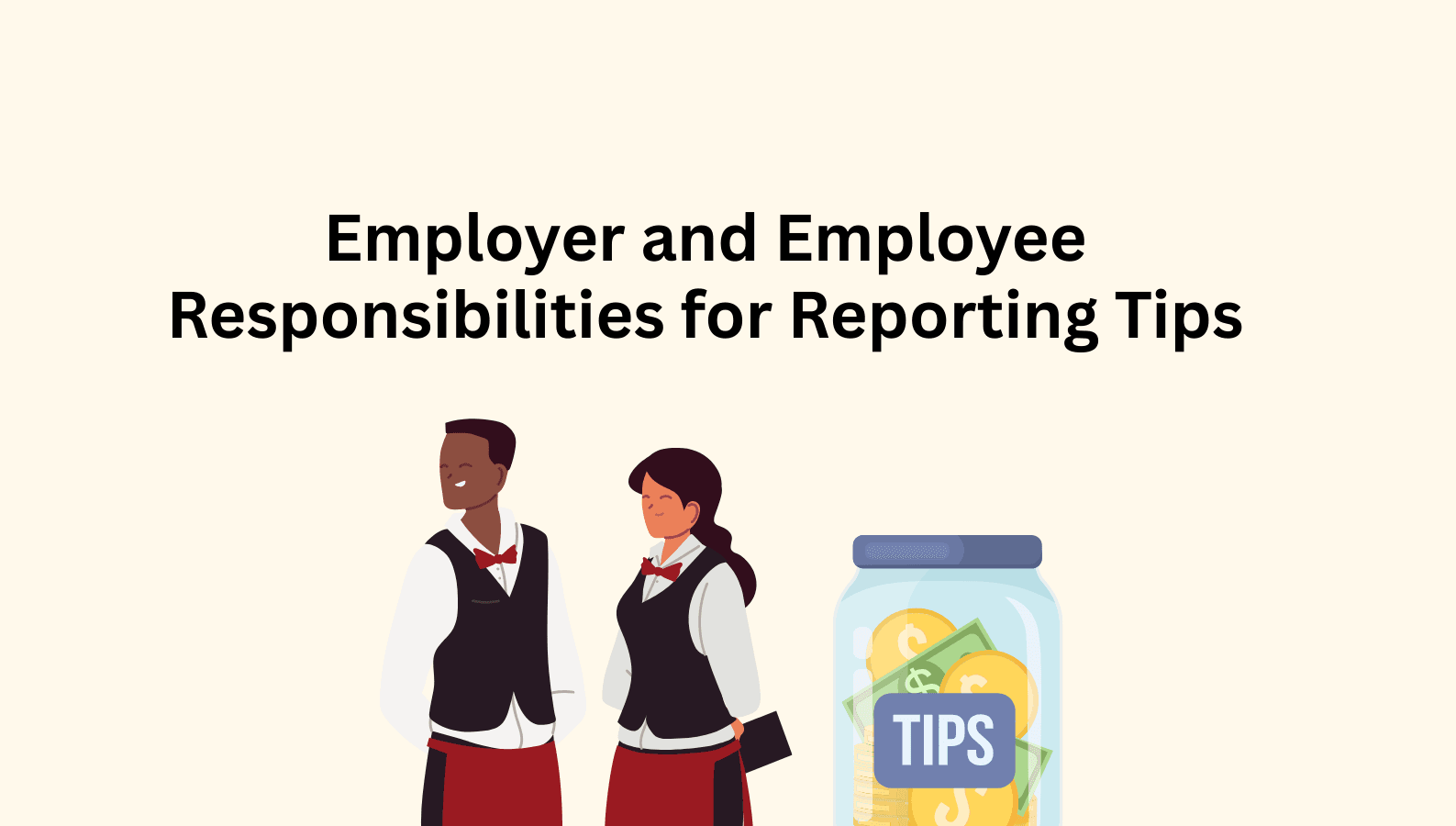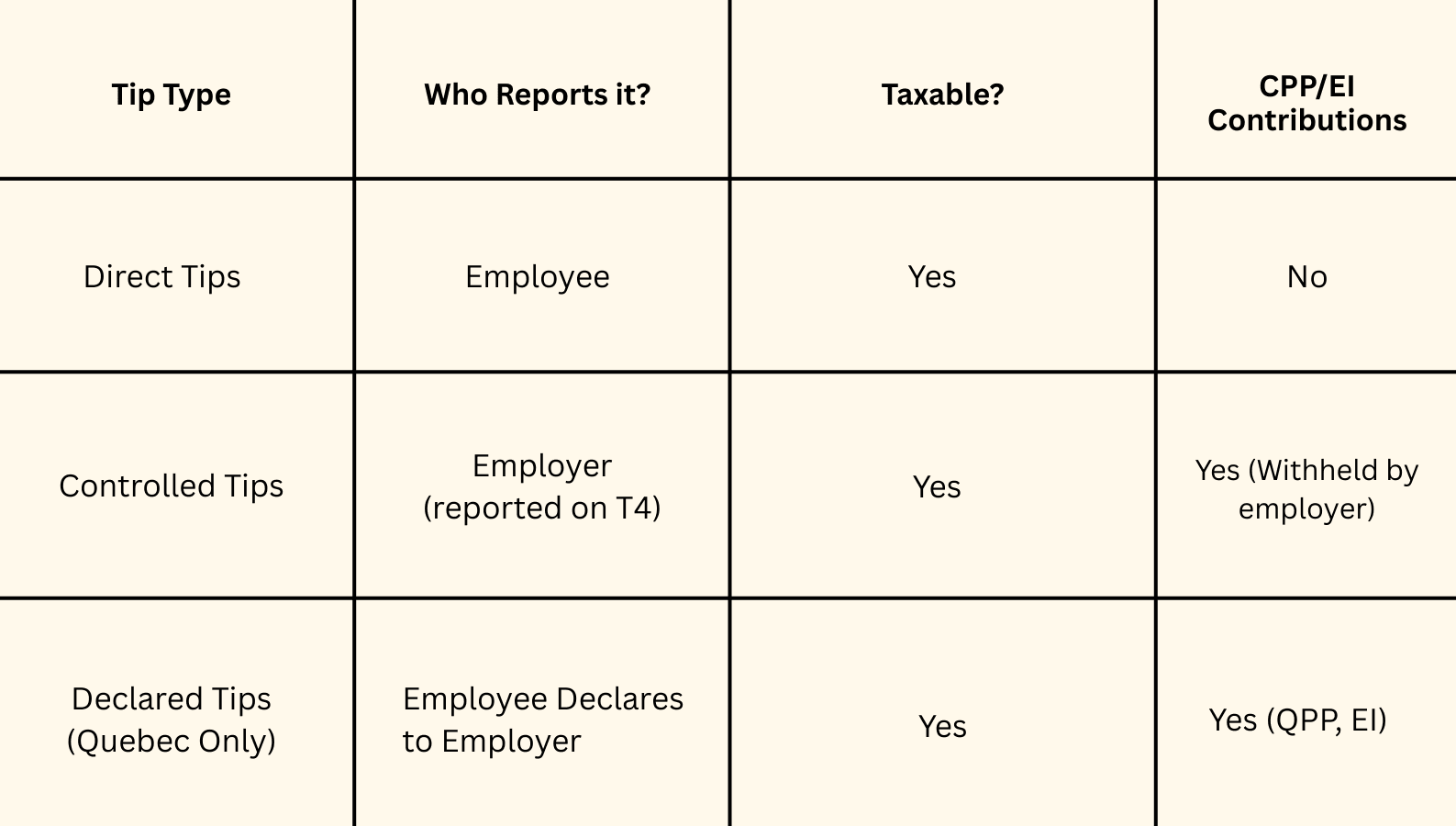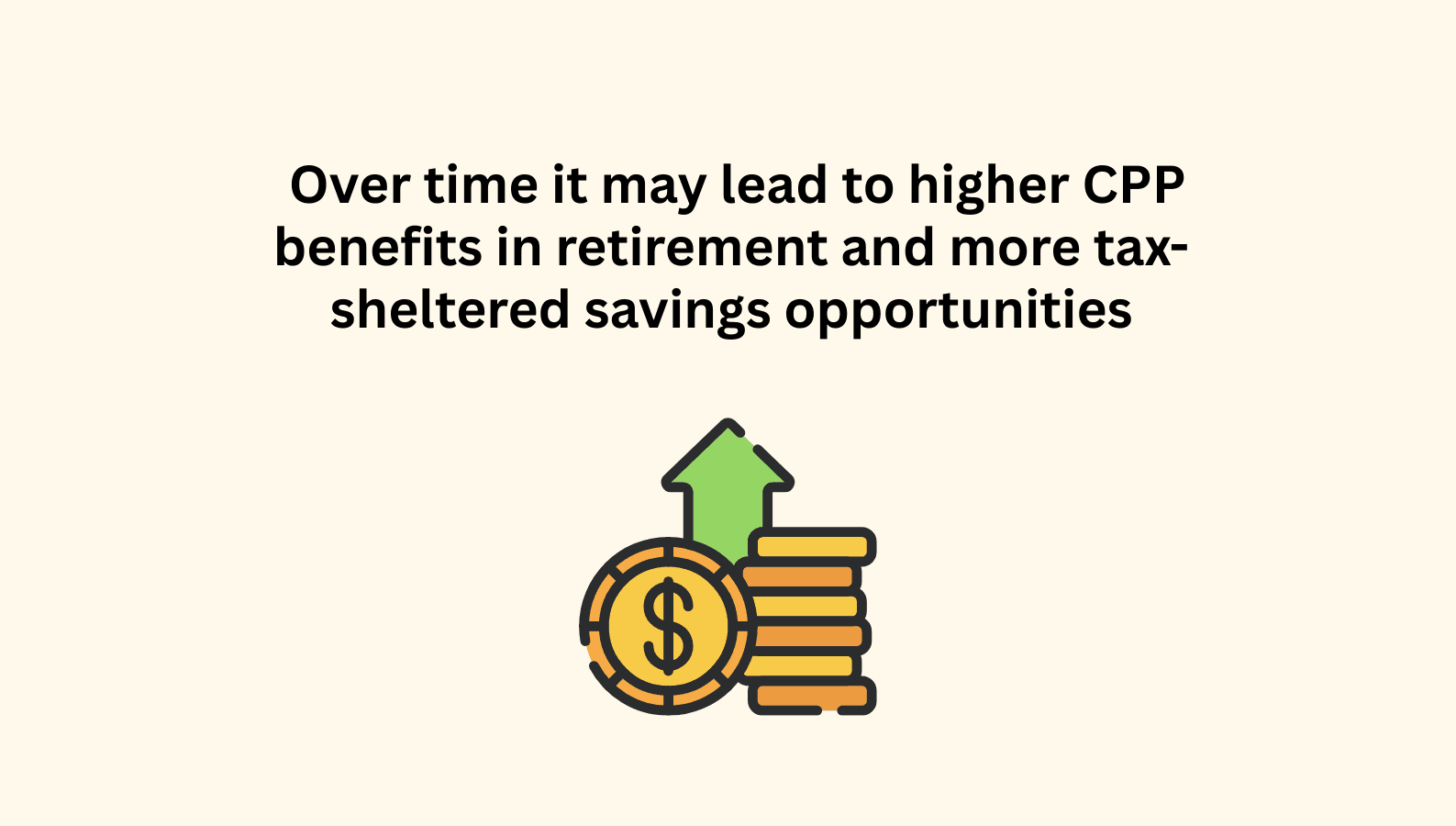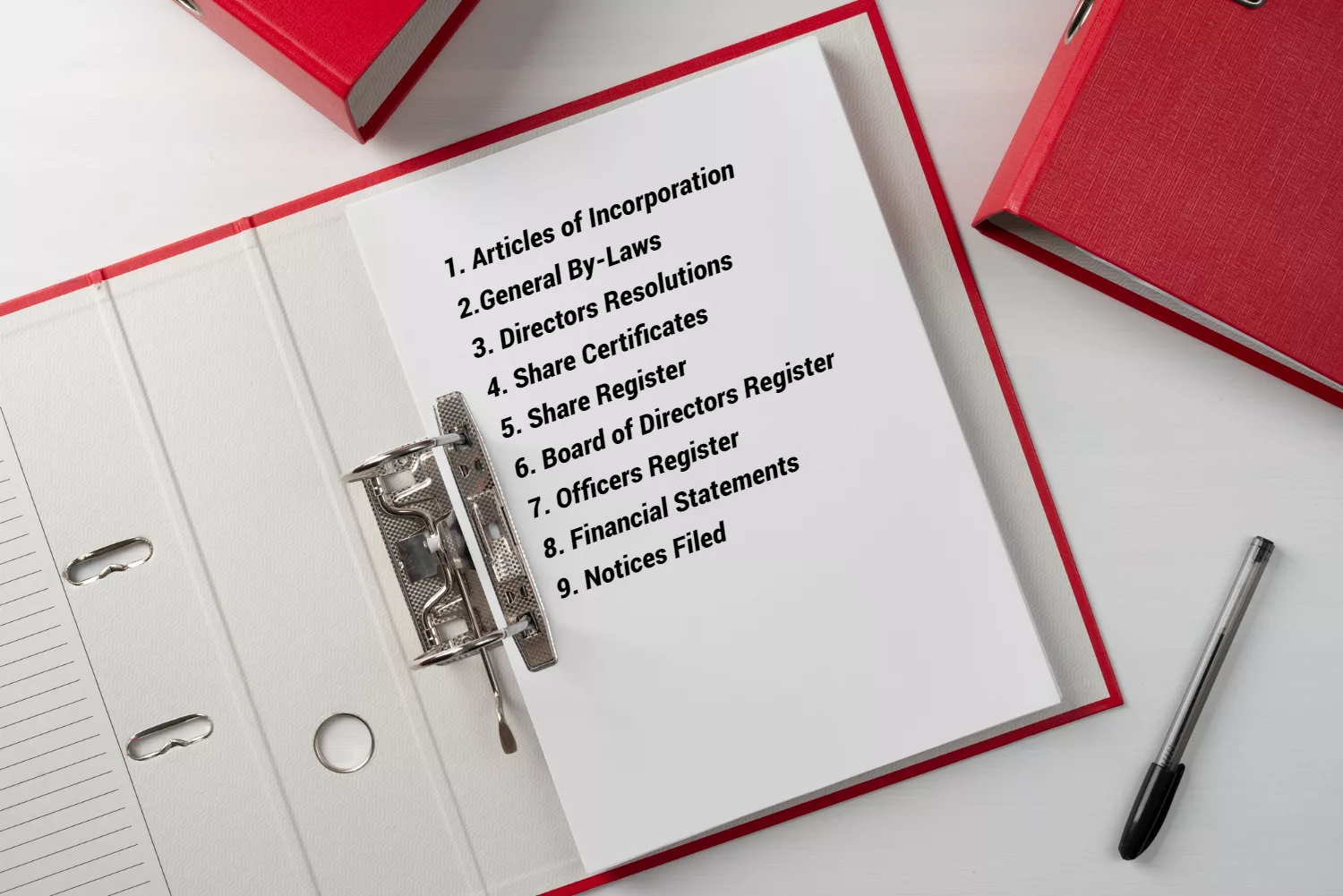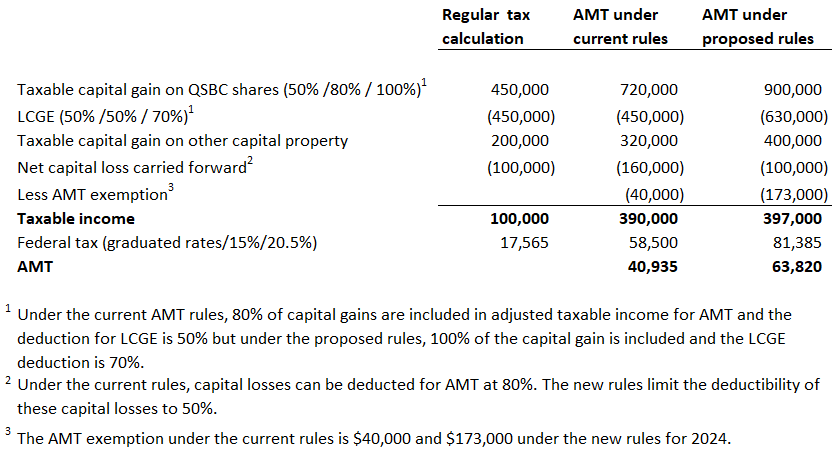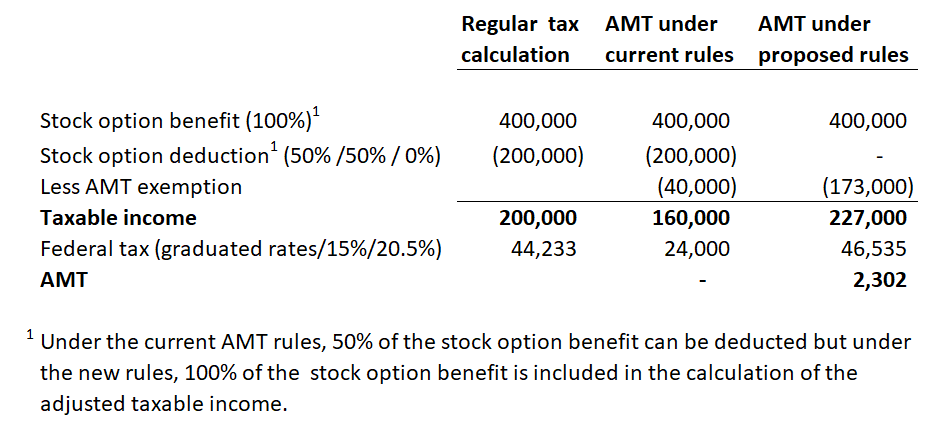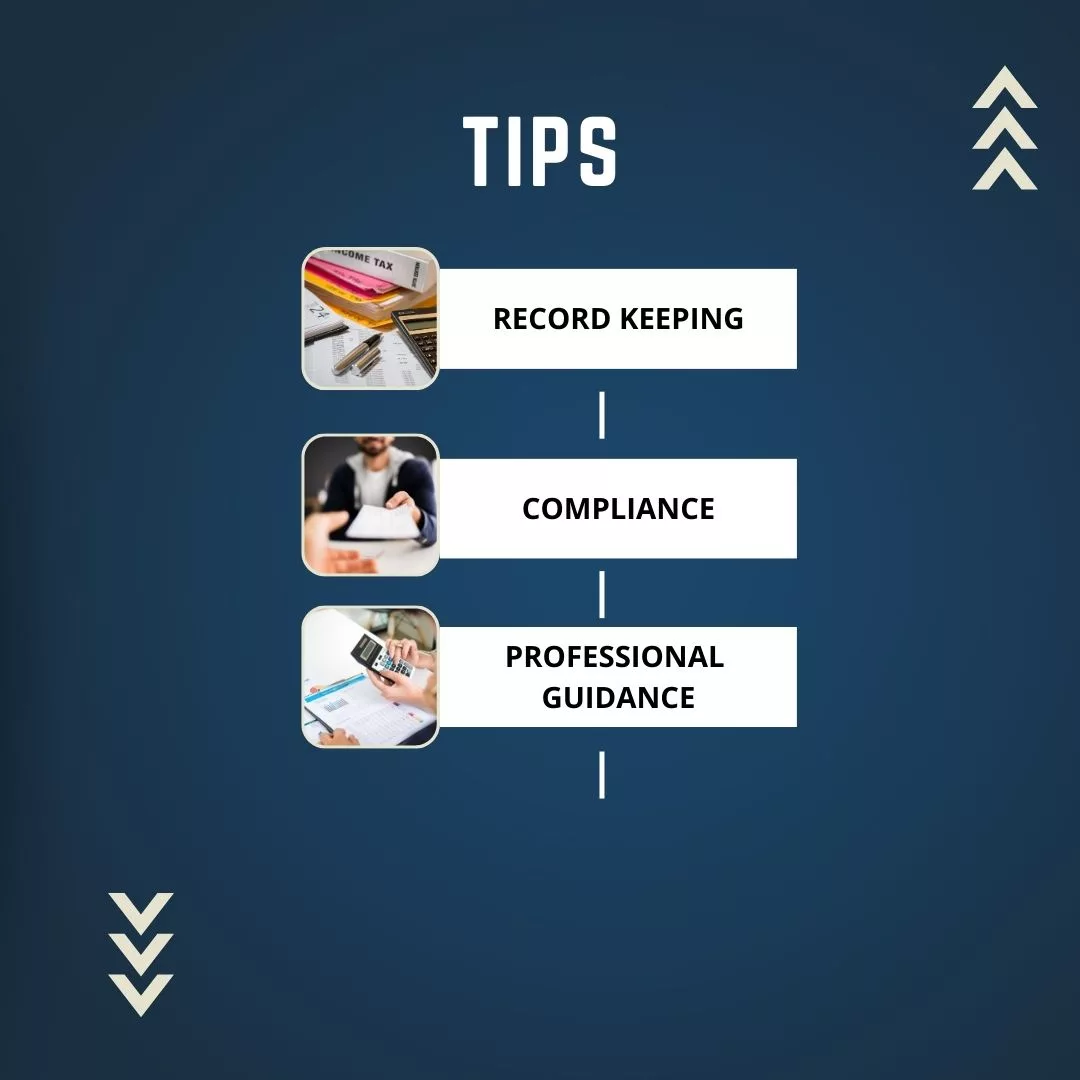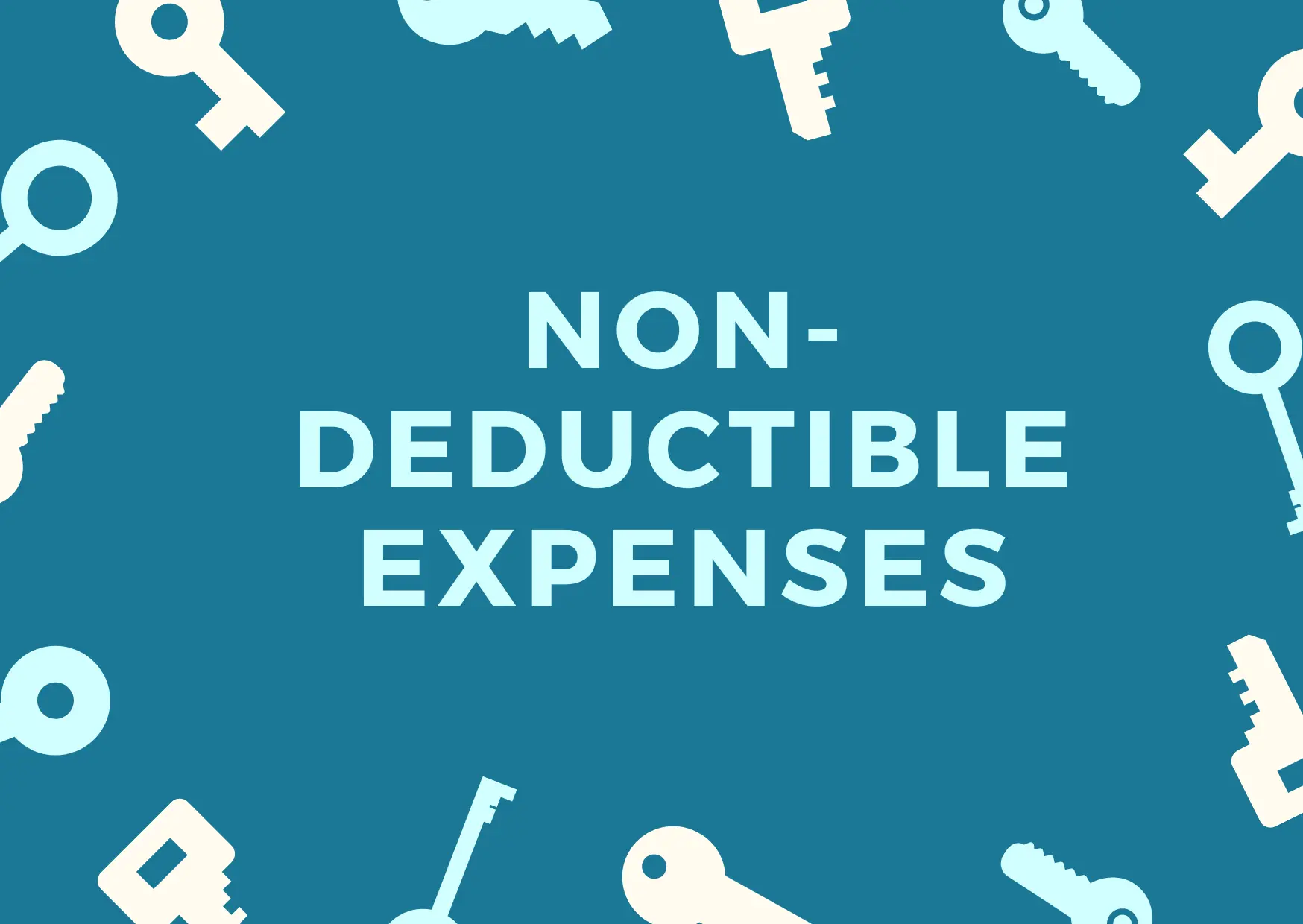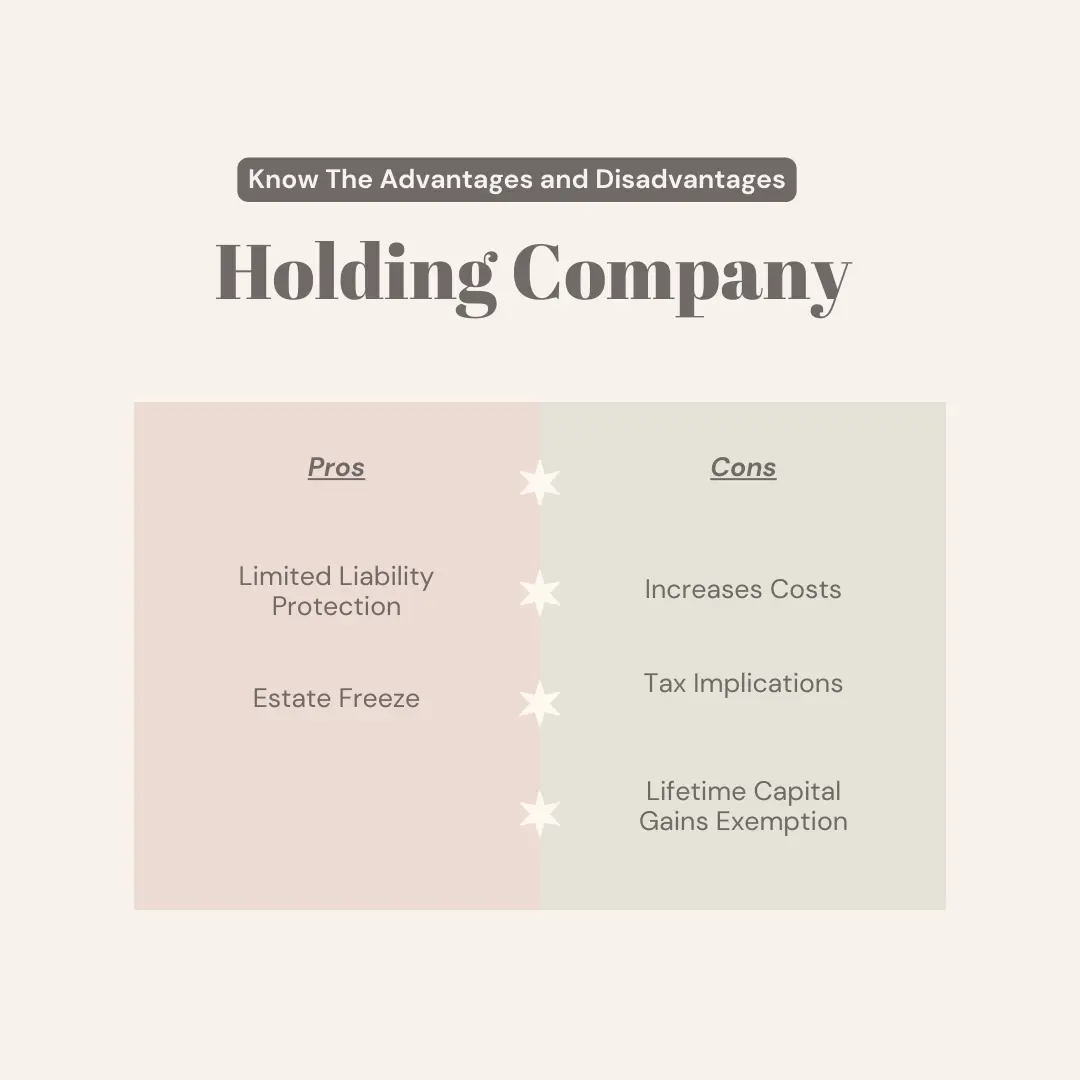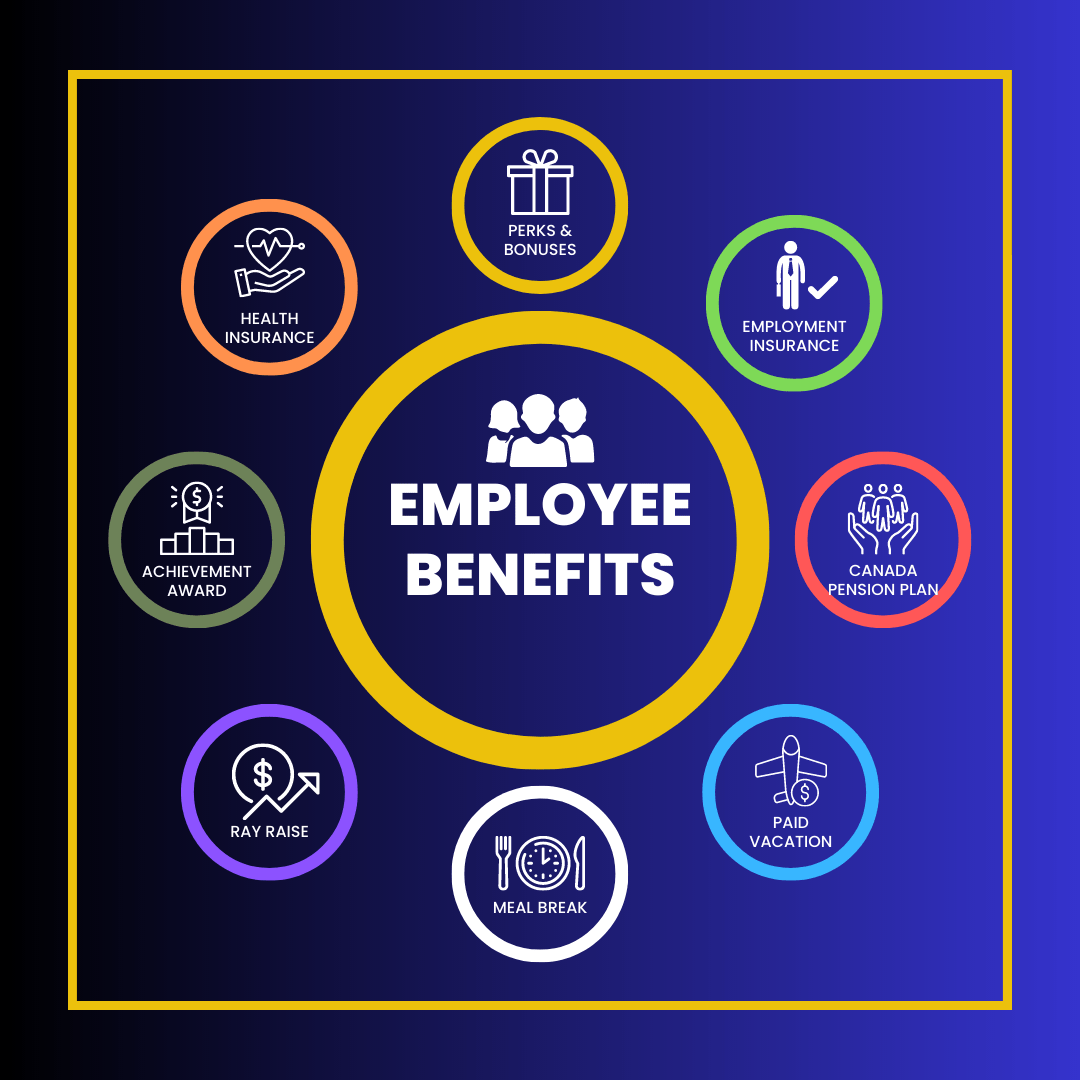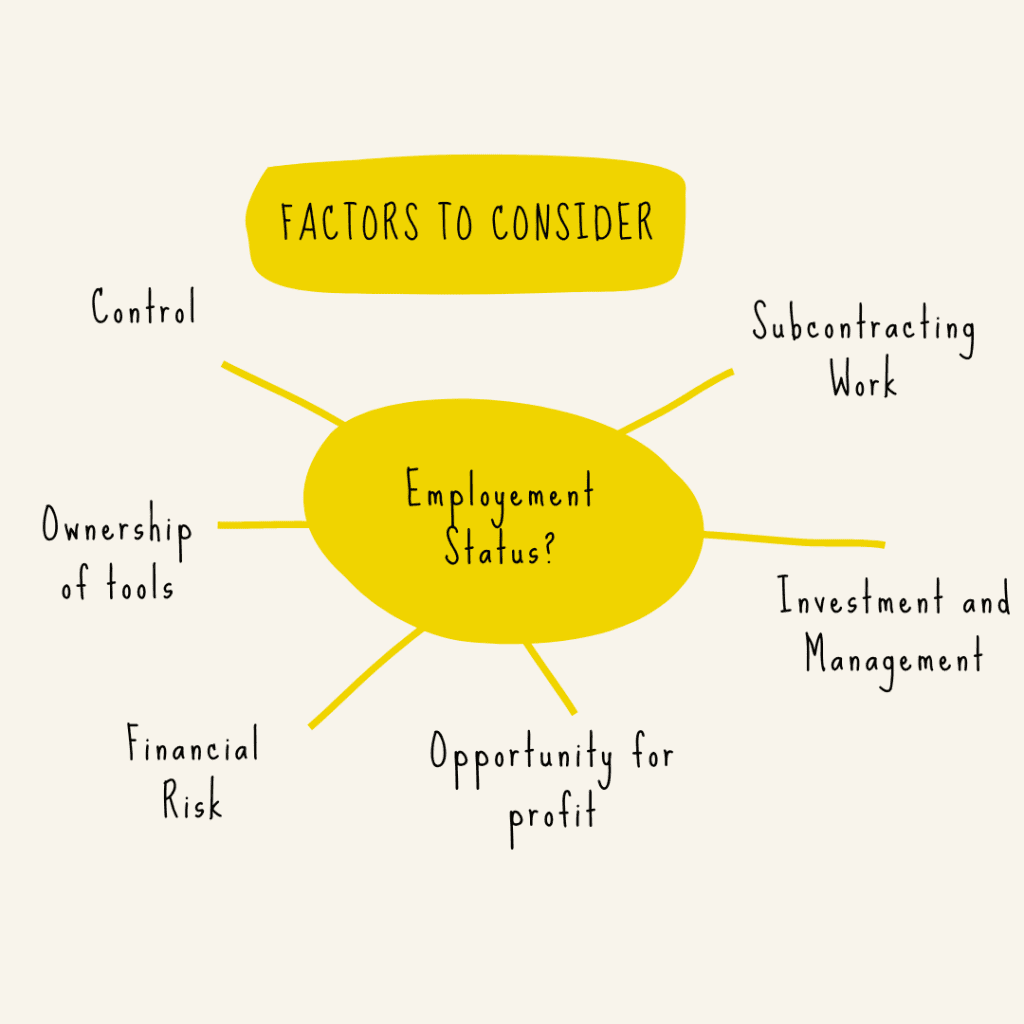Section 85 Rollover: A Tax-Deferred Strategy for Canadian Business Owners
If you’re a Canadian business owner, there may come a time when you need to move assets into a corporation—whether you’re incorporating your sole proprietorship, setting up a holding company, or reorganizing your existing business for tax or estate planning purposes. The challenge? Such transfers can trigger significant immediate taxes on any gains built up over time.
That’s where Section 85 of the Income Tax Act, commonly known as the Section 85 rollover provision, comes in. This election allows a taxpayer to move eligible assets into a taxable Canadian corporation on a tax-deferred basis, meaning you won’t have to pay tax right away on any built-up gains. Instead, you can push that tax liability into the future, giving you more flexibility and control over your cash flow.
This strategy is especially valuable for sole proprietors who are ready to incorporate and take advantage of benefits like lower small business tax rates and limited liability. It’s also widely used by existing corporations that want to reorganize their assets or transfer property into a holding company as part of a broader tax or estate plan.
In this article, we’ll walk through how the Section 85 rollover works, who qualifies, the rules you need to follow, and some common examples to help you see it in action.
Table of Contents
What Is a Section 85 Rollover?
Generally, under subsection 69(1), when a taxpayer disposes of property to a non-arm’s length party, the proceeds of disposition are deemed to equal the fair market value of the property. For example, when you transfer your property as a sole proprietor to a corporation and the property in question has accrued gains, it will be transferred at fair market value, which could create a large tax bill.
A Section 85 rollover is a tax election under the Canadian Income Tax Act that allows a taxpayer (the transferor) to transfer eligible assets to a taxable Canadian corporation (the transferee) in exchange for shares and other non-share consideration. By transferring assets under Section 85, the transferor can avoid triggering immediate capital gains tax at the time of transfer.
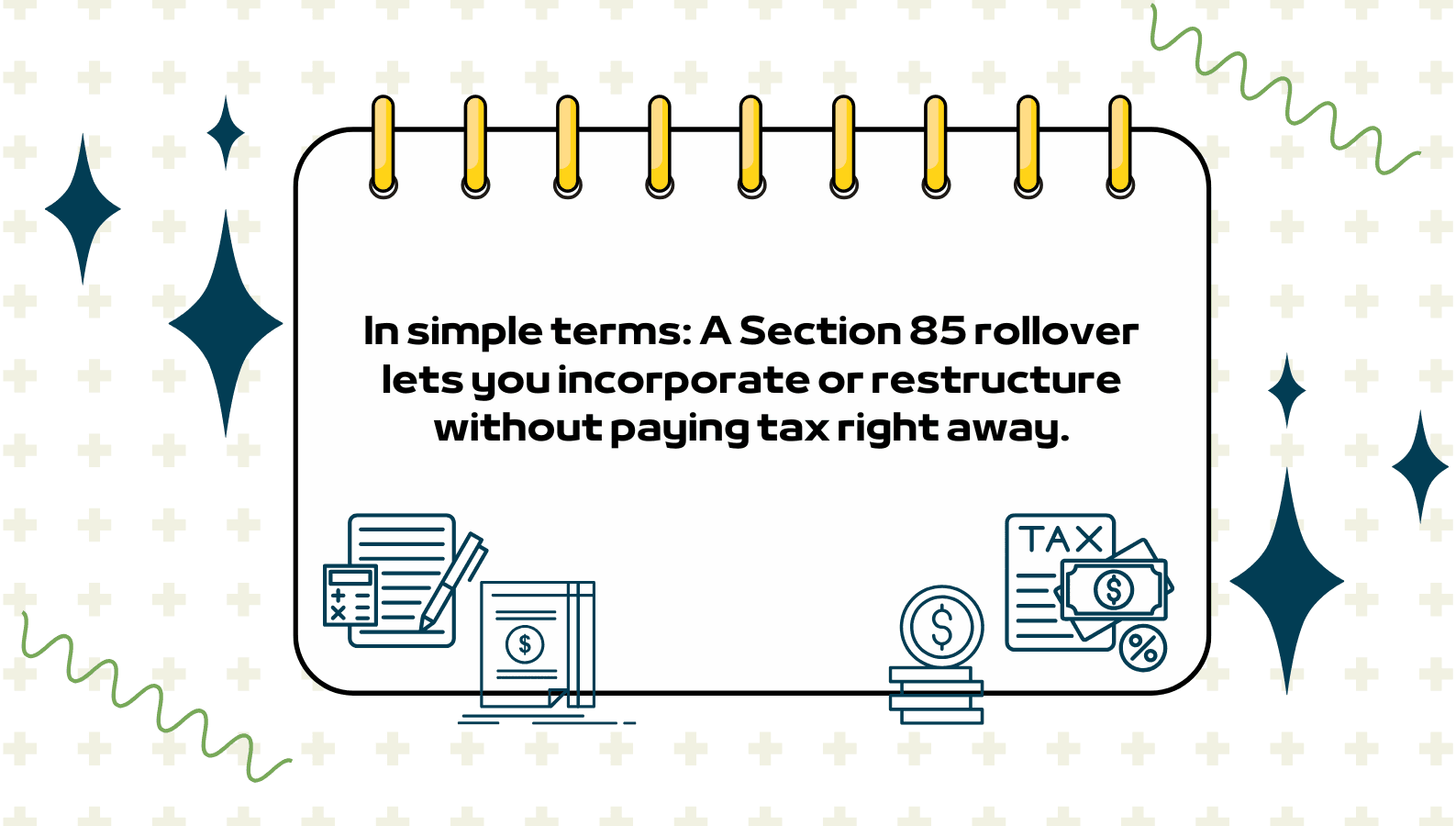
Purpose of the Section 85 Rollover
The Section 85 election is a cornerstone of Canadian tax planning and the primary purpose is tax deferral. As such, the rollover exists to provide flexibility and tax efficiency in business structuring. Without it, every time assets are moved into a corporation, owners would face immediate taxes on any appreciation in value—even though nothing was actually sold for cash. Its primary purpose is to enable tax-efficient transfers of property to a corporation. Common uses include:
- Business incorporation – Transfer assets to your new corporation without immediate tax consequences.
- Succession and estate planning – Reorganize family business ownership for smoother generational transfer.
- Capital gains crystallization – Trigger specific gains strategically to use exemptions or offset losses.
- Corporate reorganizations – Move assets between related companies as part of restructuring.
- Tax deferral – Shift income-generating property into a corporation to benefit from lower corporate tax rates.
However, while the Section 85 can result in deferral of tax, the purpose is not to eliminate or reduce the overall tax liability.
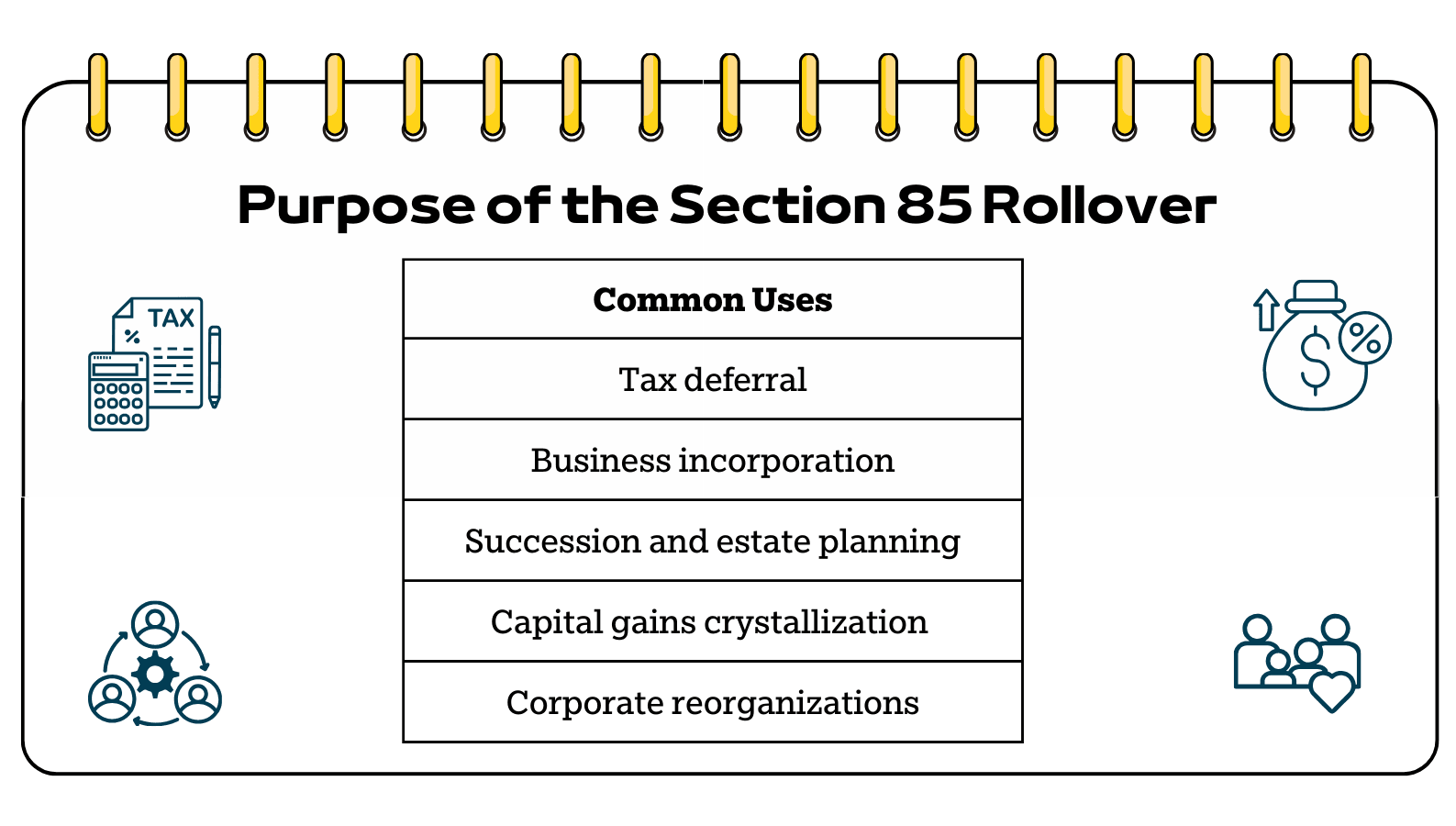
Requirements for a Section 85 Election
To successfully use a Section 85 rollover, there are some key conditions that must be met:
- Eligible Transferor – The transferor must be an individual, corporation, or trust. The transferor can also be a partnership, provided that all partners are resident in Canada. .
- Eligible Transferee – The transferee must be a taxable Canadian corporation. In other words, the receiving entity has to be incorporated in Canada and subject to Canadian tax rules. This ensures that the rollover can’t be used to shift assets outside Canada without immediate taxation.
- Eligible vs. Non-Eligible Assets - Not every type of property qualifies for a Section 85 rollover.
Eligible property includes:
- Capital property (depreciable and non-depreciable) – such as equipment, buildings, land, shares etc.
- Certain inventory (excluding real property inventory)
- Canadian and foreign resource property
Non-eligible property includes:
- Real property held as inventory (i.e land bought for resale by a developer).
- Prepaid expenses
- Personal-use property
- Accounts receivable
- Shares consideration – The consideration must include at least one share of the corporation. Non-share considerations (“boot”) may also be included but it cannot exceed the elected amount/cost of the property transferred. If non-share consideration exceeds the cost/elected amount, a gain will be triggered to that extent. Common non-share consideration includes cash, promissory note or assumption of liabilities.
- Joint election filing – Both the transferor and transferee must file Form T2057 by the earlier of the tax filing deadline of the transferor and transferee for the year in which the transfer took place.
- Elected amount limits – The elected amount is the transfer price jointly chosen by the transferor and the corporation. This “elected amount” becomes the transferor’s proceeds of disposition and the transferee’s (purchaser’s) cost of the asset. The elected amount must fall within between these two general limits:
- Lower limit: cannot be less than the fair market value of the non-share consideration (“boot”) received by the transferor.
- Upper limit: cannot exceed the fair market value of the property transferred.
Special Limits:
- For inventories and non-depreciable capital property, the lower limit cannot be less than the lesser of:
- FMV of property
- Cost amount of the property transferred.
- For depreciable properties, the lower limit cannot be less than the lesser of:
- FMV of property
- Cost amount of the property transferred
- Undepreciated Capital Cost (UCC)
For in-depth technical rules on elected limits, see CRA’s Income Tax Folio S4-F5-C1.
Typical Scenarios and Examples
Example 1: Incorporating a Sole Proprietorship and Transfer of Assets
Maria runs business as a sole proprietor and owns building with:
- Original cost (cost): $100,000
- Fair market value (FMV): $300,000
Maria wants to transfer the building into her newly incorporated company (Opco) in exchange for shares and a $60,000 promissory note.
- Without a Section 85 rollover, Maria has a capital gain in the amount of $200,000 on the building ($300,000 FMV – $100,000 cost).
- With a Section 85 rollover, Maria and Opco can choose an elected amount anywhere between the building’s cost ($100,000) and its FMV ($300,000).
- If Maria transfers or elects at $100,0000, Maria avoids triggering immediate capital gains tax because the transfer value equals her original cost.
- The $60,000 promissory note (boot) reduces the adjusted cost base of the shares Maria receives. The ACB of Maria’s shares on the transfer is $40,000 (elected amount of $100,000 - $60,000 of boot or cash received).
In this way, Maria defers her $200,000 gain until she disposes of her shares in the future.
A summary of the transaction is illustrated below:
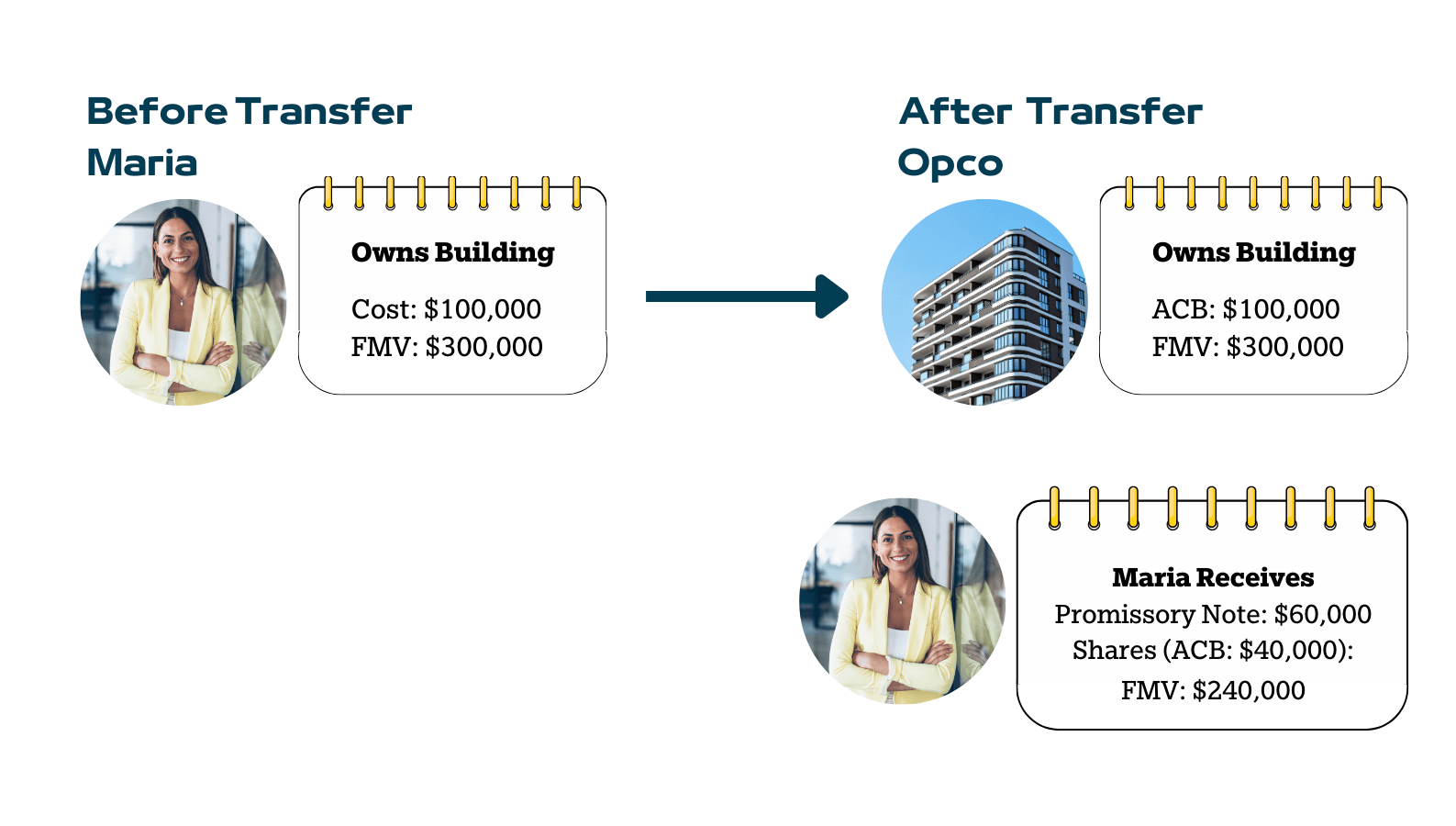
How to File a Section 85 Rollover (Form T2057)
To take advantage of the Section 85 rollover, the parties must file Form T2057: Election on Disposition of Property by a Taxpayer to a Taxable Canadian Corporation and complete the following steps:
- Identify eligible assets for transfer
- Valuation – Obtain fair market valuations, especially for goodwill and real estate.
- Incorporate the corporation – Ensure the receiving company is properly set up with the right share structure.
- Draft a transfer agreement – Document the assets transferred and the consideration received. Ensure a price adjustment clause is included in the purchase agreement.
- Complete Form T2057 – Both transferor and transferee must file.
- Meet the deadline – File by the earliest of either party’s tax filing due date.
- Maintain records – Keep valuations, agreements, and calculations in case of CRA review.
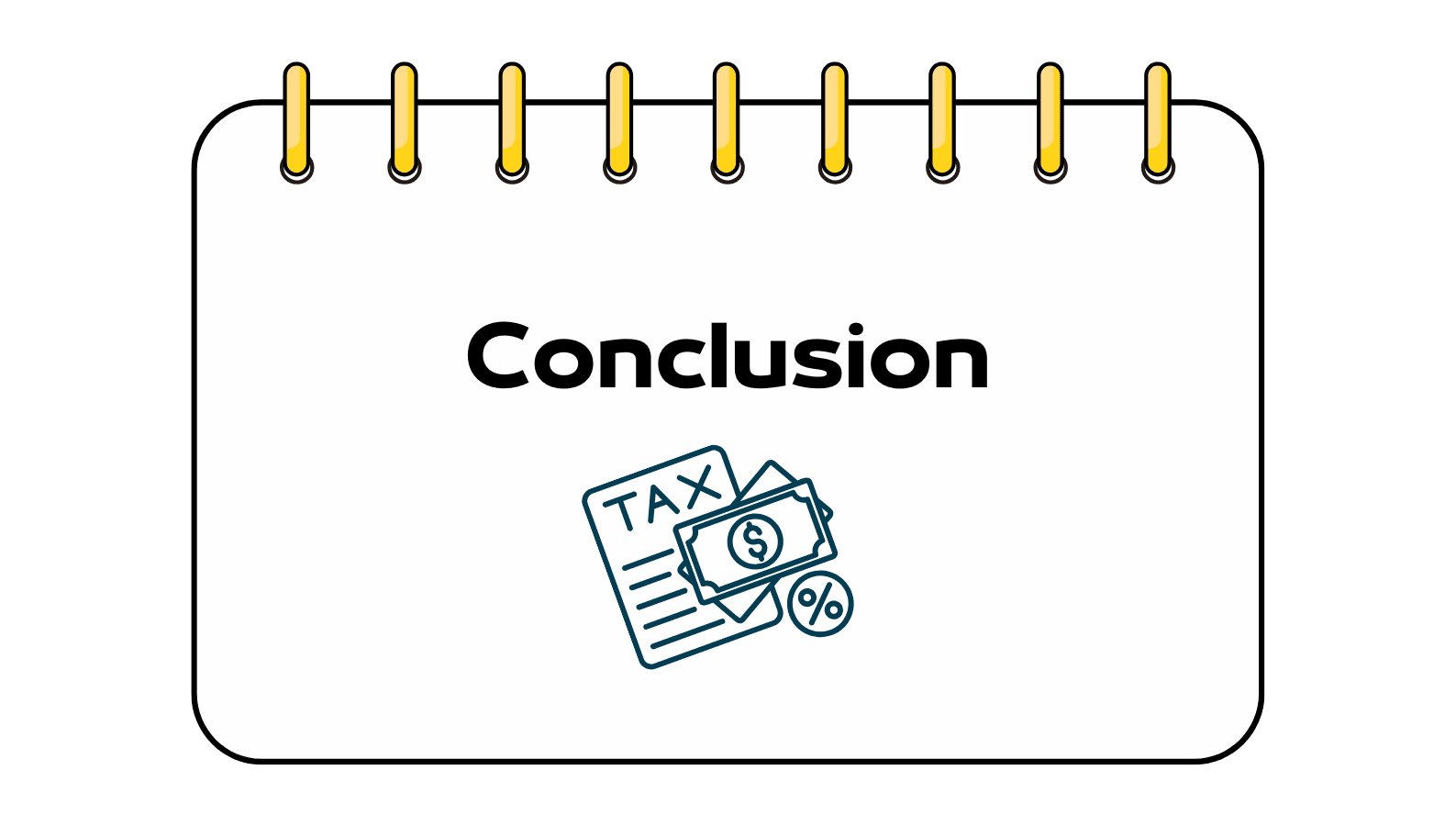
The Section 85 rollover is one of the most valuable planning tools available to Canadian business owners. It enables you to incorporate, reorganize, or plan succession while deferring immediate tax liabilities.
That said, the rules can be complex. Proper valuations, transfer agreements, and timely filing of Form T2057 are critical. For this reason, most entrepreneurs rely on professional tax advisors to guide them.
By understanding and applying this powerful rollover strategy, you can grow and restructure your business in a tax-efficient way, deferring taxes until a more strategic time in the future.
Whether you're incorporating, restructuring, or planning for succession, our accountants can guide you through the complexities of the Section 85 rollover. As a full-service accounting firm in Hamilton , our experienced tax accountants are ready to provide the expertise and support you need. Contact us today.
If you want to learn more about other tax and accounting topics, explore the rest of our blog!
Disclaimer
The information provided on this page is intended to provide general information. The information does not take into account your personal situation and is not intended to be used without consultation from accounting/tax professionals. NBG Chartered Professional Accountant Professional Corporation will not be held liable for any problems that arise from the usage of the information provided on this page.

